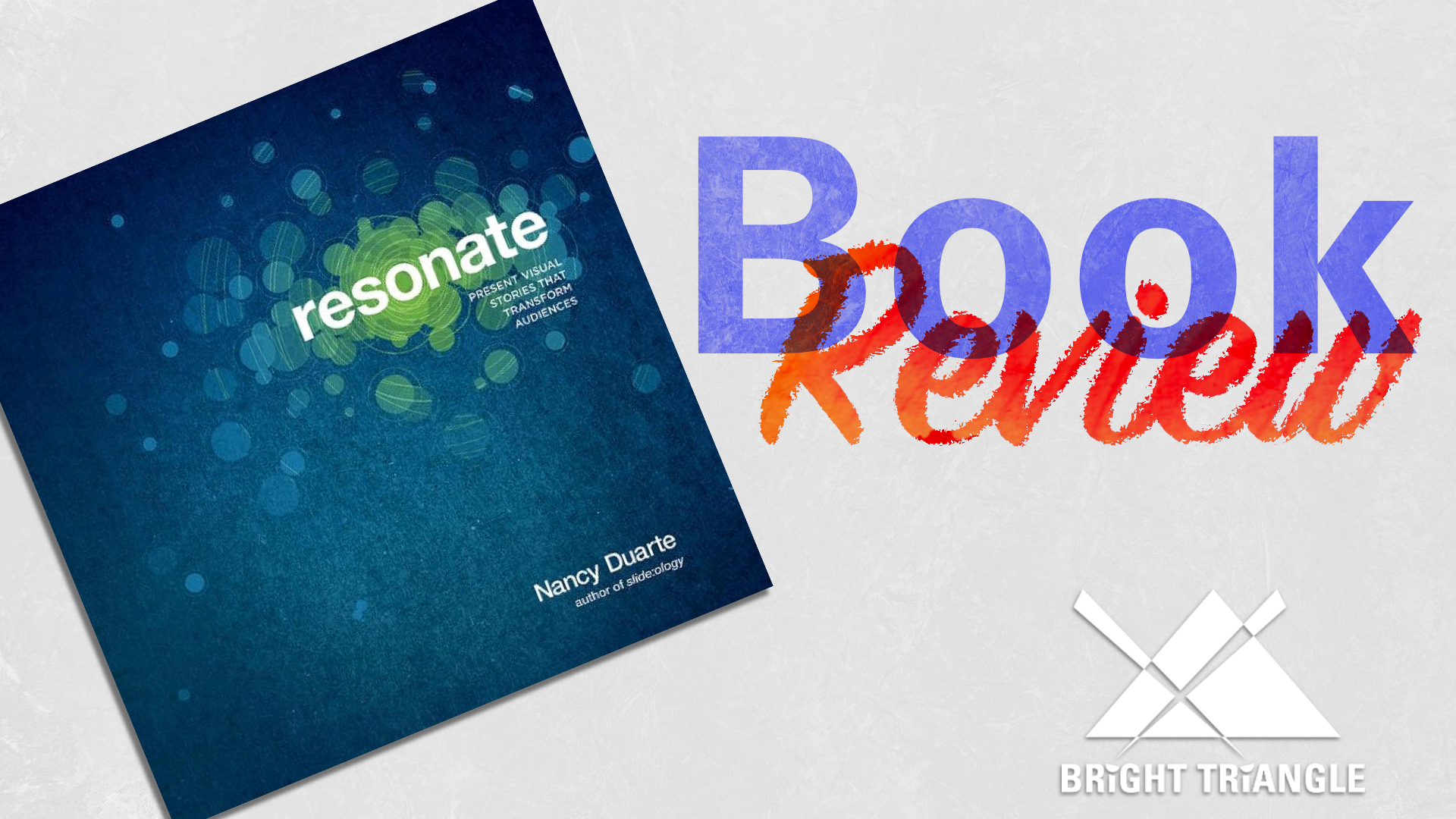Book Review: Resonate by Nancy Duarte
Nancy Duarte and her firm are leaders in the communication space. Many of the concepts and principles we adhere to when crafting presentations come from her extraordinary body of work. In this article, we highlight our thoughts on her book Resonate.
What if your presentation did not force its message but allowed the audience to embrace it enthusiastically? That’s the power of resonance, which Duarte unlocks in her book, “Resonate.” She reveals the secrets to crafting presentations that move people emotionally and inspire them to action.
Tune in to your audience
Great presenters tune their message to the exact frequency of their audience, understanding their needs, anxieties, and aspirations. It’s like carefully adjusting a radio dial to find the perfect station. Presenters should craft a message that speaks directly to their audience’s hearts, not just their minds.
With the right approach, even ordinary staff meetings can become platforms for persuasion. No matter how small, every presentation deserves your total commitment and attention. A thoughtful presenter can win over even the most skeptical audience with a genuinely resonant message.
Most presentations fall into the trap of being all about the presenter. But Duarte urges us to shift the spotlight to the audience. Your presentation should be a gift, a journey explicitly tailored for them. Approach it with humility and genuine care, creating a deeper connection.
Tell a story
Including convincing data and statistics in your presentation is essential to winning over an audience, but it’s not enough. Duarte says you must weave in stories, anecdotes, and human connections to connect with your audience. Stories can change our brain chemistry, transport us to new worlds, and leave a lasting impression.
While working as an urban planner, our founder, Kevin Holliday, often had to present unpopular ideas to hostile audiences. He reports,
I once had to explain to a neighborhood restaurant association why running parking meters in their neighborhood would help their businesses. We collected data in another area of the city. As it turns out when the meters shut down at 6 pm, the parking spaces filled up, not with diners, but restaurant employees.
The data slides showed the meters ought to run later, but I didn’t convince anyone until I told the story of a bartender I chatted with. She drove to the neighborhood at 5:45 pm and waited in her car with an eye out for parking enforcement.
Once the clock struck six and the meters switched off, she scurried out of her car to begin her shift. She often found a spot right in front of the restaurant, and her car remained there until the restaurant closed. Not one customer could use that prime parking spot the entire evening.
I didn’t change everyone’s mind, but through storytelling, many association members started thinking about a policy change.
Duarte instructs us to think of a presentation as a hybrid between a report and a story. It needs the factual accuracy of a report but also the emotional pull of a narrative. Weave information into a compelling story with a hero, a villain, and a satisfying resolution. And at the heart of that story lies an idea worth fighting for.
Hook and challenge them
Every great presentation needs a hook, a turning point that grabs the audience’s attention and pulls them in. It could be a shocking statistic, a thought-provoking question, or a personal anecdote that exposes the stakes. Without tension or potential loss, your presentation will fall flat.
Duarte reminds us that the final moments of your presentation are crucial. This is where you deliver your call to action, your rallying cry that sends your audience off energized and inspired. Paint a vivid picture of the potential reward, the world transformed by your idea, and leave them with a powerful image that will resonate long after the lights come up.
Remember, great presenters are not born, but they can be made. They invest hours into honing their craft, carefully crafting each word, structure, and delivery. Resonance is a skill; like any skill, it takes practice, dedication, and a lot of heart. Tune in to your audience, craft your message empathetically, and watch your ideas take flight. The world is waiting to hear your story.


